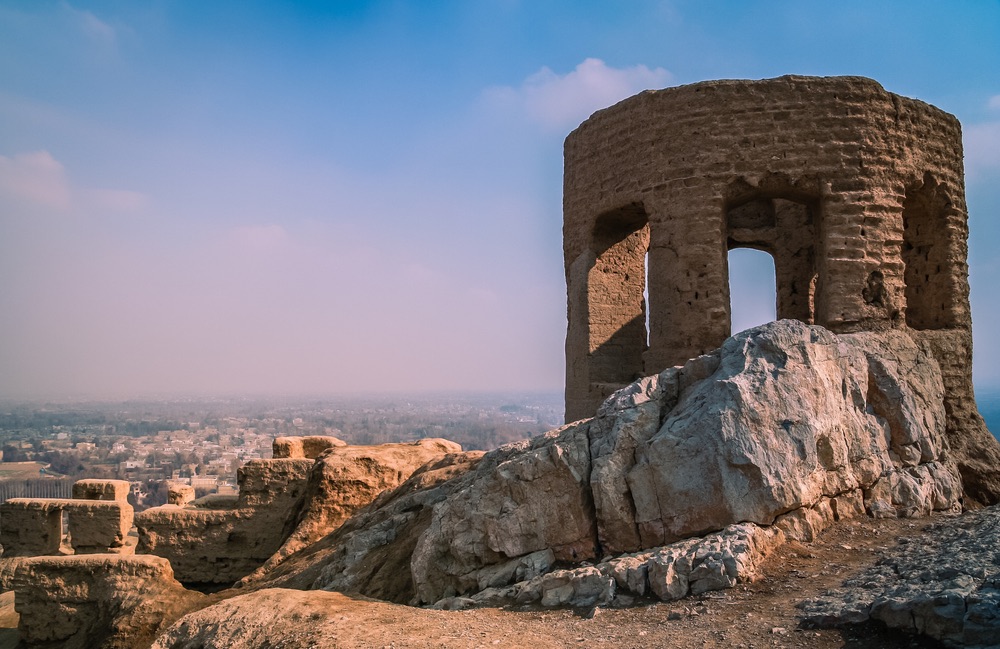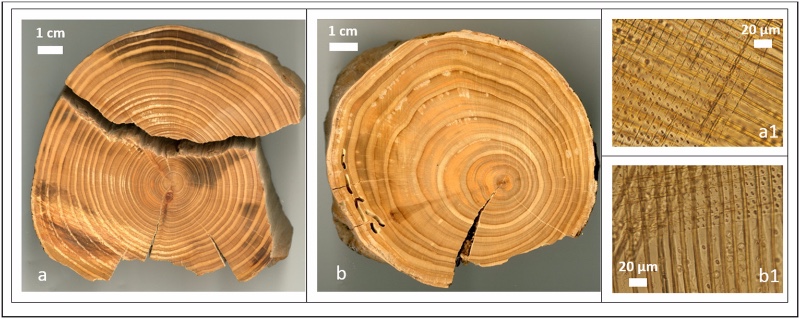Palaces of ancient Persia were built with 'fire temple' wood

Cypress wood might have been used in ancient palaces in Persia partly because of its sacred value in a religion known for its "fire temples," a new study finds.
Scientists examined ruins from the Sasanian Empire, which lasted from A.D. 224 to 651 and constituted the last imperial dynasty in Persia — what is now Iran. It was the most powerful political and economic rival of the Roman Empire for nearly half a millennium, said study lead author Morteza Djamali, a paleoecologist at the Mediterranean Institute of Biodiversity and Ecology in Aix-en-Provence, France.
"Sasanians repeatedly defeated the Romans in different battles and were the absolute masters of southwest Asia," Djamali said. [10 Epic Battles That Changed History]
The Sasanian "Kings of Kings" built a number of palaces and forts, as well as Zoroastrian fire temples. Followers of Zoroastrianism, one of the world's oldest active religions, believe in an epic struggle between good and evil; they worship in temples where fires burn as symbols of divine light.
Dating wood
The scientists examined cypress wood taken from the Palace of Ardashir I, who established the Sasanian Empire. They also looked at wood from the fort known as Qal'a-ye Dokhtar, which previous research suggested was constructed near the beginning of the Sasanian Empire, as well as the Palace of Sarvistan (also spelled Sarvestan), a building of uncertain function built either during the end of the Sasanian Empire or the rise of Islam in Persia. All of these sites are located in Persis, what is now the province of Fars in southwestern Iran, where the Sasanians first rose to power.
The researchers carbon-dated five fragments of timber preserved in the walls from the three sites. This is the first time scientists have such dates for Sasanian monuments in Persis; until now, the precise ages of these structures were uncertain.
As expected, carbon dating revealed that the Palace of Ardashir I dated back, at the very latest, to the beginning of Sasanian rule. The findings also suggested that Qal'a-ye Dokhtar was constructed when Ardashir I was battling for supremacy of Persia.
Get the world’s most fascinating discoveries delivered straight to your inbox.
In addition, the Palace of Sarvistan dated to about the seventh century A.D., which was the end of the Sasanian Empire. It also appeared to have been used for centuries during the beginning of Islamic domination over Iran, the researchers said. Intriguingly, a Zoroastrian fire temple at this site might have been used for several centuries after the Muslim conquest, they added.
"The Zoroastrians, followers of the oldest monotheistic religion in the Middle East, were not suddenly persecuted and slaughtered by Arabs, but most probably continued to practice their religion and maintain their fire temples for several centuries," Djamali told Live Science.
Sacred wood
All of the wood fragments that the scientists examined were cypress, an evergreen tree that held cosmic significance to followers of Zoroastrianism. For instance, according to legend, the founder of the religion, the prophet Zoroaster — also known as Zarathustra — planted a cypress he received directly from heaven in front of the fire temple at the city of Kashmar, the researchers said. They noted that cypress continues to be an essential element of Persian gardens even today.
Cypress wood was known in the ancient world for its durability, insect-repelling properties, resistance to humidity and seawater, and fragrant scent, the researchers said. The ancient Greeks used it to build temple doors, and the ancient Romans used it to construct villas and ships, the scientists added. [See Photos of a Spartan Palace and Artifacts]
The researchers suggested that ancient Roman workers and engineers captured by ancient Persians during battles with the Roman Empire might have recommended the use of cypress as a building material. In fact, Roman prisoners of war helped to construct many bridges, dams, drainage systems and irrigation canals in Sasanian cities, the researchers noted.
However, it's possible that Persians used cypress wood as timber long before their first contact with the Romans, given the tree's sacred status in Zoroastrianism, the researchers added. "We think that the frequent use of cypress tree in the Persis region, the homeland of Persian civilization, is an indication of massive cultivation of the tree," Djamali said.
Future research will examine ancient pollen grains trapped in lake sediments to see what other plants grew in Persian gardens, Djamali said. In addition, the scientists will analyze wood in other Sasanian monuments "to determine their exact ages," Djamali said. "This will help us better know this forgotten empire."
Djamali and his colleaguesdetailed their findings online Jan. 30 in the Journal of Archaeological Science: Reports.
Original article on Live Science.




